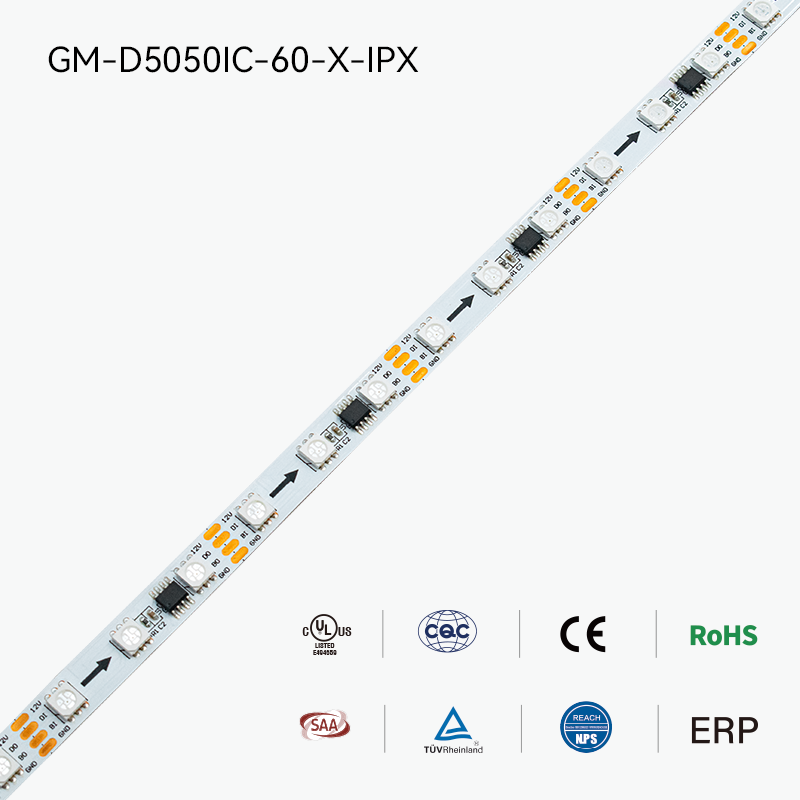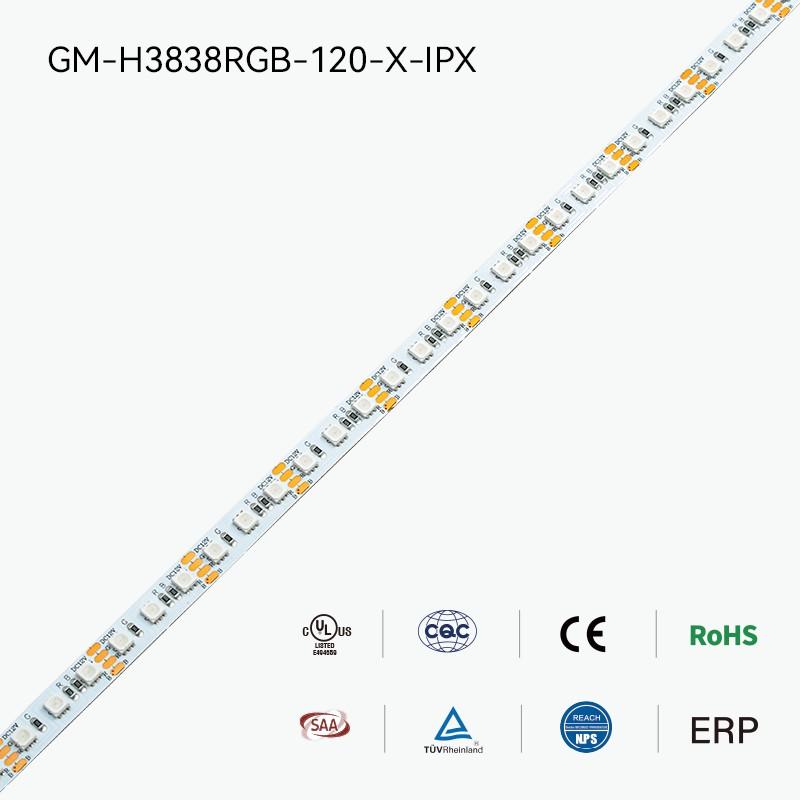RGB LED strip lights have become a go-to solution for all kinds of decorative and functional lighting projects. Whether it’s mood lighting behind a TV, accent lines along a shelf, or bright under-cabinet lighting, LED strips are flexible, easy to install, and available in various densities. One of the most important specifications to understand when choosing an RGB strip is the number of LEDs per meter—commonly 30, 60, or 120.
At first glance, the numbers may seem technical, but they make a real difference in how the strip performs. Let's take a closer look at how these different densities affect brightness, power usage, color uniformity, and where each type works best.
LED density refers to how many LEDs are packed into one meter of the strip. The three common options are:
30 LED Decorative Strip – has 30 light-emitting diodes per meter
LED Strip Light 60 LEDs/M – doubles that to 60 LEDs per meter
120 LEDs/M LED RGB Strip Lights – packs 120 LEDs in a single meter
More LEDs per meter usually means more brightness and better light coverage, but also higher power consumption and cost. The right choice depends on what you want to achieve.

A 30 LED Decorative Strip is considered a low-density option. It’s best used in areas where a soft glow or ambient lighting is desired rather than strong illumination. Because the LEDs are spaced farther apart, you’ll likely see gaps between the lights unless the strip is diffused or hidden behind a surface.
This type of strip is great for:
TV backlighting
Behind furniture
Simple wall accents
Subtle lighting in bedrooms or hallways
Since each LED is responsible for covering more space, the brightness per meter is lower compared to higher-density strips. If you're aiming for a gentle aesthetic or just want a hint of color in a room, 30 LEDs per meter might be enough.
However, the low density also means color mixing can appear patchy, especially if the strip is installed where the LEDs are directly visible. For RGB effects to look smooth and consistent, more LEDs per meter usually helps.

The LED Strip Light 60 LEDs/M is the most widely used and balanced option. It offers a noticeable step up in brightness and color blending from the 30 LED version, while still remaining efficient and flexible in use.
Why choose 60 LEDs/m?
The spacing between LEDs is halved, improving light coverage
Color transitions appear smoother
Great for under cabinets, shelves, desks, or ceiling coves
Still easy to cut, install, and manage power-wise
In most indoor lighting scenarios, a LED Strip Light 60 LEDs/M provides just the right level of brightness—enough to light up a space clearly without being harsh. It’s a good fit for those who want both functionality and aesthetics.
This density also reduces the visibility of individual LEDs, especially when paired with a diffuser. That makes it suitable for locations where the strip itself might be visible, like open shelves or display units.

At the high end of the scale, 120 LEDs/M LED RGB Strip Lights provide extremely bright, even lighting. These strips pack LEDs very tightly together, which almost eliminates the spotting or gaps that are common with lower-density options.
Typical uses include:
Retail lighting
Display cases or showcases
Photography backgrounds
Rooms with high ambient light
Accent lighting where strong colors are needed
With 120 LEDs in a single meter, these strips are ideal for projects where lighting is both functional and decorative. They produce vibrant color output and very smooth transitions. Because the LEDs are so close together, the light blends more evenly, which is especially important for RGB lighting effects.
However, there are a few things to keep in mind:
Higher power consumption (usually double that of 60 LEDs/m)
Generates more heat, especially in longer runs
May require heat sinks or aluminum profiles
Needs a larger or more stable power supply
Despite these considerations, 120 LEDs/M LED RGB Strip Lights are worth the extra effort if your project calls for high-quality, professional-looking results.
Here’s a quick side-by-side comparison:
| Feature | 30 LEDs/m | 60 LEDs/m | 120 LEDs/m |
|---|---|---|---|
| Brightness | Low | Medium | High |
| Color Uniformity | Basic, visible light gaps | Smooth blending | Very smooth, continuous color |
| Best Use | Decorative accents | Everyday indoor lighting | Commercial, display, strong accent |
| Power Use (approx.) | ~4–5W/m | ~9–12W/m | ~18–24W/m |
| Cost | Most affordable | Mid-range | Higher, but high-quality result |
If you’re lighting a small space or adding a subtle glow, the 30 LED Decorative Strip offers a cost-effective way to bring in color without overwhelming the area. For most home applications, a LED Strip Light 60 LEDs/M provides a great balance between brightness and ease of use. But if your goal is to create vivid lighting with little to no light gaps, especially for a professional or retail setup, the 120 LEDs/M LED RGB Strip Lights are the way to go.
Each density level has its place. It’s not just about how bright the strip can get—it’s about how the light behaves in your space and whether it fits your lighting goals.
If you'd like, I can also help create a version with supporting images or diagrams (like LED density visualization or installation examples), or turn it into a product-focused landing page. Would you like that?